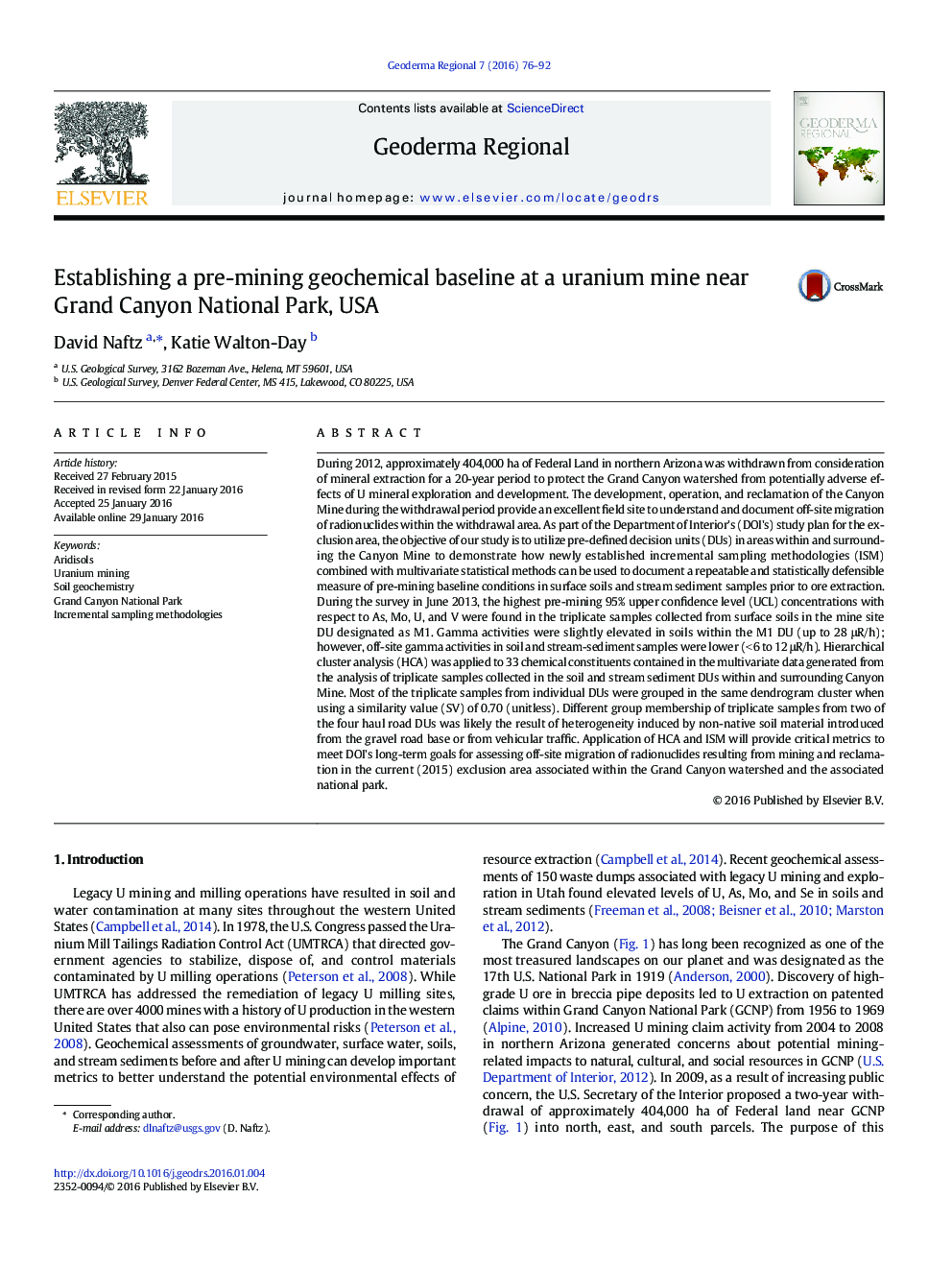| کد مقاله | کد نشریه | سال انتشار | مقاله انگلیسی | نسخه تمام متن |
|---|---|---|---|---|
| 4480760 | 1316743 | 2016 | 17 صفحه PDF | دانلود رایگان |
• 400,000 ha of land surrounding Grand Canyon National Park was withdrawn from uranium mining for 20 years.
• Incremental sampling of soils surrounding Canyon Mine used to define pre-mining geochemical baselines.
• Soil decision unit within mine perimeter contained elevated concentrations of As, Mo, U, V, and surface radiation.
• Soil decision units surrounding Canyon Mine indicate no evidence of offsite contamination.
During 2012, approximately 404,000 ha of Federal Land in northern Arizona was withdrawn from consideration of mineral extraction for a 20-year period to protect the Grand Canyon watershed from potentially adverse effects of U mineral exploration and development. The development, operation, and reclamation of the Canyon Mine during the withdrawal period provide an excellent field site to understand and document off-site migration of radionuclides within the withdrawal area. As part of the Department of Interior's (DOI's) study plan for the exclusion area, the objective of our study is to utilize pre-defined decision units (DUs) in areas within and surrounding the Canyon Mine to demonstrate how newly established incremental sampling methodologies (ISM) combined with multivariate statistical methods can be used to document a repeatable and statistically defensible measure of pre-mining baseline conditions in surface soils and stream sediment samples prior to ore extraction. During the survey in June 2013, the highest pre-mining 95% upper confidence level (UCL) concentrations with respect to As, Mo, U, and V were found in the triplicate samples collected from surface soils in the mine site DU designated as M1. Gamma activities were slightly elevated in soils within the M1 DU (up to 28 μR/h); however, off-site gamma activities in soil and stream-sediment samples were lower (< 6 to 12 μR/h). Hierarchical cluster analysis (HCA) was applied to 33 chemical constituents contained in the multivariate data generated from the analysis of triplicate samples collected in the soil and stream sediment DUs within and surrounding Canyon Mine. Most of the triplicate samples from individual DUs were grouped in the same dendrogram cluster when using a similarity value (SV) of 0.70 (unitless). Different group membership of triplicate samples from two of the four haul road DUs was likely the result of heterogeneity induced by non-native soil material introduced from the gravel road base or from vehicular traffic. Application of HCA and ISM will provide critical metrics to meet DOI's long-term goals for assessing off-site migration of radionuclides resulting from mining and reclamation in the current (2015) exclusion area associated within the Grand Canyon watershed and the associated national park.
Journal: Geoderma Regional - Volume 7, Issue 1, March 2016, Pages 76–92
